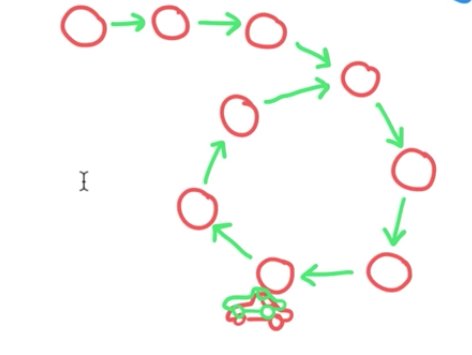141. Linked List Cycle
Given a linked list, determine if it has a cycle in it.Solution
 From the left picture. If there’s a cycle in the linked list, two pointer moving in a different steps must meet somewhere in the loop. There for we define two pointer slow and fast. At each step, slow moves one position forward and fast moves two position forward. If fast goes to the end without encounter with slow. Then there’s no cycle.
From the left picture. If there’s a cycle in the linked list, two pointer moving in a different steps must meet somewhere in the loop. There for we define two pointer slow and fast. At each step, slow moves one position forward and fast moves two position forward. If fast goes to the end without encounter with slow. Then there’s no cycle.
def isCycle(head):
if head is None or head.next is None: return
slow = head
fast = head.next
try:
while slow != fast:
slow = slow.next
fast = fast.next.next
return True
except:
return False
142. Linked List Cycle II
Given a linked list, return the node where the cycle begins. If there is no cycle, return null. Note: Do not modify the linked list.Solution
Follow by last challenge, now we need to find the entry point. If the distance from start to entrance is H; distance from entrance to meeting point is D; the length of the cycle is L. Then the distance that the slow pointer walk through is H + D. The fast point walks double distance 2(H+D)+1. And the difference between former and later must be the multiplication of L. Thus, we have d_fast-d_slow = H + D +1= L -> H +1= L-D. That is to say, the distance from the head to the entrance is the same as from encounter point to the entrance. As a result, if two pointer move from head+1 and encounter point respectively, they will eventually meet at the entrance. def findEntrance(head): # Base case #same as finding cycle if head is None or head.next is None: return slow = head fast = head.next try: while slow != fast: slow = slow.next fast = fast.next.next return True except: return False p1 = head.next p2 = slow while p1!=p2: p1 = p1.next p2 = p2.next return p1